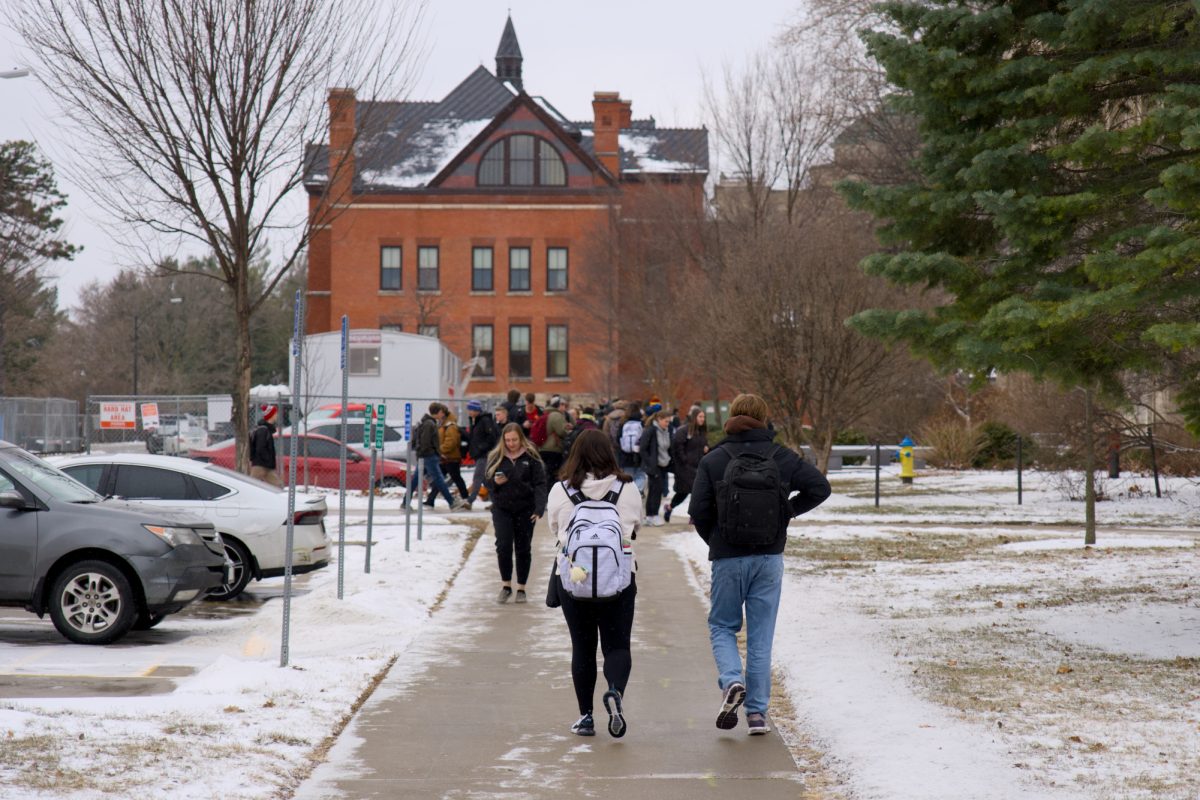Bill may forgive debt of interest on loans for qualified majors
April 12, 2005
WASHINGTON — Lawmakers said Tuesday the diminishing status of the fields of math and science is a bigger threat looming over the United States than that of terrorists, weapons of mass destruction or a stock market crash.
“America’s dominance in science and innovation is slipping,” said Rep. Frank Wolf, R-Va. “We are facing a critical shortage of science and engineering students in the United States.”
To take the first step in remedying that, Wolf introduced the Math and Science Incentive Act of 2005, which would forgive interest on student loans for science, math or engineering undergraduate students who agree to work five years in the field after graduation. The student may work in any position in their respective fields.
Students who are eligible — undergraduate students with one or more loans — must apply for reimbursement and would be selected on academic record or job performance and likelihood of remaining in the field. A cap for reimbursement would be set at $10,000.
A National Science Foundation report from February 2005 stated the United States ratio of natural science degrees in the college population was 5.7 per 100 people, which falls behind Europe at between 8 and 13 degrees per 100, and Asia at 11 degrees per 100. The same report stated that from 1994 to 2001, enrollment in undergraduate science and engineering programs decreased by 10 percent in the United States. In that time, other parts of the world saw increases of up to 25 percent.
“Americans, for decades, led the world in patents,” Wolf said. “The percentage of U.S. patents has been steadily declining as foreigners, especially Asians, have become more active and in some fields seized the innovation lead.”
The program would have an estimated cost of $100 million annually, depending on how many students participate.
“Math, science, and engineering are all useful professions for industry and innovation, but I don’t see there being any shortage of those kind of people,” said Aubrey Allen, junior in mathematics. “I wasn’t aware that these areas needed much recruitment.”
Nathan Willis, sophomore in aerospace engineering, said he favors such a program.
“An interest forgiveness program would make my life a whole lot easier,” Willis said. “I have a fair amount of student loans … With a program like this, I wouldn’t have to work summers and during the week, and I’d concentrate on my studies and out-of-class activities at Iowa State.”
Lawmakers also recognized the declining math and science competency in elementary and high schools. The incentive program could help that problem by putting math and science graduates into classrooms where they are needed, Wolf said.
Allen said she plans on going into math education after she graduates. She said that although she is open to the program, she is also skeptical of it.
“If this program comes with strings, I would probably accept a geographic restriction as to where I could teach, because Iowa has a lot of difficulty attracting and keeping its teachers,” she said.
“If it involves working for the government for five years, then why not call it a government job?”
Roberta Johnson, director of financial aid, said other federal forgiveness programs are in existence, including a program that forgives interest for students going into teaching, but they have not been very effective.
“The challenge on this teacher one was that it’s been on the books for several years, but there’s been no appropriation by the federal government,” Johnson said. “This is the first year that we’ve heard that there will be funding for students to qualify for the teacher forgiveness option.”
— Samuel Berbano contributed to this article from Ames.






